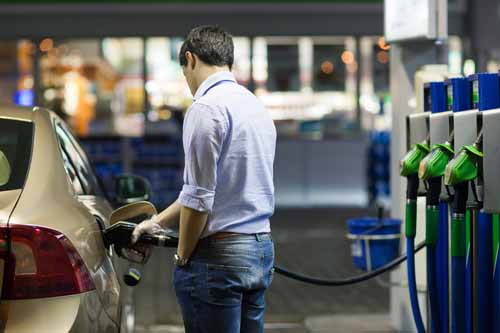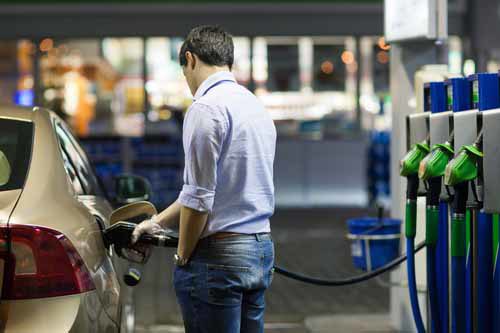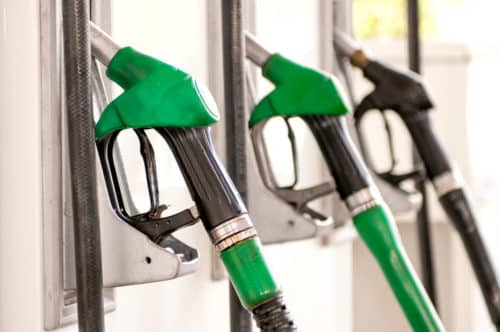What is Octane rating?
An octane rating is a numerical figure that represents the antiknock properties of a fuel. There are different ways of measuring octane ratings, and the U.S. uses the Anti-Knock Index (AKI).
What is regular grade gas in Wyoming?
According to the Federal Trade Commission, regular gasoline is usually 87 octane, mid-grade is 89 octane with premium usually being at 92 or 93 octane. If you are ready this anywhere in Wyoming or even Denver, you might be pondering right now. Those are not the choices you are most likely to see at your local gas station.
The local gas station offers 85, 87 and 91. Why is that?
I called the Wyoming Dept of Agriculture and they told me that 85 Octane is the legal minimum octane rating for motor fuel in Wyoming. I asked them why that was and the reply was… altitude. He referred me to an ASTM publication but told me the information was proprietary.
Altitude
Air is less dense at altitude. Air and fuel is what is mixed in the engine to make it go. The theory is, that, if the air is less dense then the fuel needed can have less of an octane rating.
The dept. states in a document titled, ‘Notice of Intent to Adopt Rules’, “The allowable reductions in vehicle anti knock requirements for altitude are 4.5 for less than 89 Antiknock Index (AKI), and 3.0 for greater than 89 AKI. Fuel may be marketed using these reductions, but actual AKI minimum must be posted”.
What do vehicle manufacturers recommend?
Most vehicle manufacturers recommend 87 Octane 0-15% ethanol, which means buying a mid-grade fuel in Wyoming as opposed to a regular grade fuel in most other States. In an article by USA Today, General Motors fuel specialist Bill Studzinski said, “We do not endorse the use of 85 octane or lower”.
The Federal Lands Transportation Institute also said in a document that, “Most modern vehicles with fuel injection can automatically compensate for higher altitude. The Electronic Control Module (ECM) (also called Electronic Control Unit ‐ ECU) will adjust the fuel mixture for higher altitude to prevent the engine from “running rich” (too much fuel in the mixture, and not enough oxygen).”
“The most typically used engine management systems found in automobiles today have a knock sensor that monitors if knock is being produced by the fuel being used. In modern computer-controlled engines, the ignition timing will be automatically altered by the engine management system to reduce the knock to an acceptable level”.¹
What about premium fuel?
There is only a need to use premium fuel if it is a requirement for your vehicle. For example, if it says on the gas door cap or in the owners manual, 91 or premium unleaded only. If your vehicle doesn’t require premium fuel, there are no benefits to using it as your vehicle must be tuned for that type of fuel. It won’t clean your engine any better than mid-grade fuel.
Is 85 Octane Ok To Use At Altitude?
It seems there is not a definitive answer to this as far as modern vehicles go (anything without a carburetor).
The EPA says on their website, “The sale of 85 octane fuel was originally allowed in high-elevation regions—where the barometric pressure is lower—because it was cheaper and because most carbureted engines tolerated it fairly well. This is not true for modern gasoline engines. So, unless you have an older vehicle with a carbureted engine, you should use the manufacturer-recommended fuel for your vehicle, even where 85 octane fuel is available”.
A safe bet would be to check the owners manual for your vehicle or open your fuel flap to check which fuel is recommended.
What gas do you use?
According to the U.S. Energy Information Administration, Regular grade gas is the most common choice by Wyomingites.
Assuming you don’t have a diesel, what grade of gas do you use? Did you notice any ‘knocking’ from your engine? Do you get the manufacturers recommended mpg? Have you switched grades, did you notice a difference in mpg, power, knock?
“Octane Rating.” Wikipedia, Wikimedia Foundation, 6 Sept. 2017, en.wikipedia.org/wiki/Octane_rating
Phelan, Mark. “Vacationers, Beware: Bad Gas Can Damage Your Car.” USA Today, Gannett Satellite Information Network, 29 May 2013, www.usatoday.com/story/money/cars/2013/05/29/bad-gasoline-low-octane-too-much-ethanol/2369579/.
“Wyoming Prime Supplier Sales Volumes.” Wyoming Prime Supplier Sales Volumes of Petroleum Products, U.S. Energy Information Administration, 21 Aug. 2017, www.eia.gov/dnav/pet/pet_cons_prim_dcu_SWY_a.htm
Concas, Sisinnio. “Performance of Alternative Fuels at High Altitude.” Federal Lands Transportation Institute, Apr. 2012.



Recent Comments